|
April 29, 2020
Workers Speak Out on
the Day of Mourning
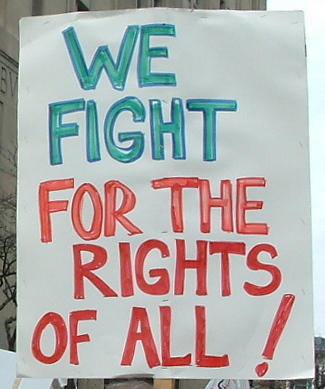 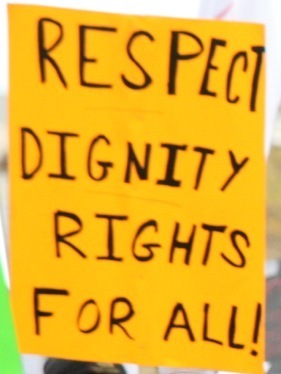 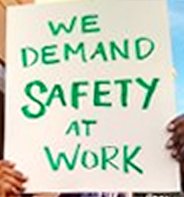
• Marc Robitaille, USW Local
9291 Prevention Representative, Westwood
Mine in Abitibi
• Simon Lévesque, Head
of Health and Safety, FTQ-Construction
• Gary Howe, President,
United Steelworkers Local 1005, Stelco in
Hamilton
• Nathalie Savard,
President, Union of Nurses, Licensed Practical
Nurses and Respiratory Therapists of
Northeastern Quebec (SIISNEQ)
• Geneviève Royer, High
School Remedial Teacher
Workers Speak Up in Defence of
the Working Conditions They Require
At the mine, we work to prevent workplace
accidents and ensure worker safety. We started
working in the mining sector again just over a
week ago, after being forced to shut down at the
end of March. A lot of workers are worried,
there is a lot of concern and that is normal. No
one wants to take this virus home. My role is to
make sure that the company has put measures in
place that are based on the health regulations
required by Public Health. We are working for
the good of everyone. Regular mine workers,
contract workers, all have the right to a safe
work environment. Even though as a prevention
representative I do not represent the managers,
what we are doing is also beneficial for them.
As soon as someone enters the site, we have to
make sure that everything is safe. We don't want
anyone to get hurt or sick.
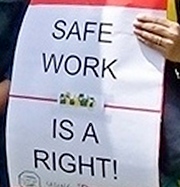 When you're a
prevention representative, you have to focus
exclusively on workers' health and safety. You
have to ask yourself if the measure that is in
place, if the practice that is being used, poses
a danger to someone. If there is a danger, you
have to find a solution. We are not talking
about dollar signs. We are talking about health
and safety. We are talking about putting the
means in place to ensure that workers work
safely. When we take part in regulatory review
committees our watchword is health and safety,
while for the employer it is always "Safety,
yes, but how much does it cost?" We do not care
how much it costs. The issue is to eliminate the
danger to workers. When you're a
prevention representative, you have to focus
exclusively on workers' health and safety. You
have to ask yourself if the measure that is in
place, if the practice that is being used, poses
a danger to someone. If there is a danger, you
have to find a solution. We are not talking
about dollar signs. We are talking about health
and safety. We are talking about putting the
means in place to ensure that workers work
safely. When we take part in regulatory review
committees our watchword is health and safety,
while for the employer it is always "Safety,
yes, but how much does it cost?" We do not care
how much it costs. The issue is to eliminate the
danger to workers.
In our case, physical distancing is our first
problem at the moment. Even before we were in
confinement [due to the pandemic], we had
already been dealing with this problem. The
employer had begun to implement measures but
they were not clear at first. The physical
distance was one to two metres, and programs
were put in place to respect a one metre
distance. A mine is vast. There are bottlenecks;
in the morning everyone meets in the same place
to get their work orders for the day, there are
changing rooms, there's the cage that takes us
underground. Workers were worried about being
very close to each other in those places.
Initially, the employer did not want to put
measures in place that were consistent with the
Public Health guidelines. But with containment,
there were very clear directives from Public
Health, that if you want to reopen the business
you have to take this and that measure. So the
measures were put in place. There is also an
educational aspect, because there are changes
required to work procedures and behaviour. More
and more, when workers pass each other, it is
becoming instinctive to do so with the two-metre
separation without having to pull out a
measuring tape to determine if you are within
the two metre distance. That is what we are
going through right now on a daily basis. Hand
cleaning is very important. When you enter the
site, you have to wash your hands and your
temperature is taken. There are cleaning
stations all over the place. Workers must clean
their machines and controls before starting
their shift. Same thing at the end of a shift.
As for the cages to go underground , we have
halved the number of people who use the cage at
one time. This means changes in the schedule.
It's a reality we are having to adapt to in our
workplace and in society.
We must continue to insist that work be done
safely and not hesitate to use health and safety
resources. The mining sector is a priority
sector under the Act respecting occupational
health and safety and it is a legal
obligation of the employer to have a prevention
representative in the mines. Workers must not
hesitate to use union representatives to help
them with health and safety issues.
When we are in a unionized environment, we must
use our resources. Where workers do not have a
union, their rights as workers must also be
asserted. The Act respecting occupational
health and safety applies to everyone, and
that is a minimum standard. With COVID-19, we
are becoming aware that our health is important
and we are taking care of ourselves, protecting
ourselves. So, let us also protect ourselves at
work. Let's keep that in mind. We must always
ask ourselves: is it dangerous to do the work
I'm doing? We must not hesitate to ask and seek
a safe solution if there is a problem.

With regard to construction, we've had the
same demands for 40 years. There's constant talk
about those involved on work sites taking charge
of their environment, however we lack the tools
to do so.
There are a lot of serious accidents in the
construction industry. Health and safety is
measured by the number of workplace fatalities,
which is particularly high in construction,
however we must not forget about the workers who
are seriously injured. Sites must be organized
so that lives stop being destroyed. In recent
years, the pressure has increased enormously, as
there's a lot of work in the construction
industry and employers are scrambling to try to
facilitate entry into the trade for poorly
trained workers. Training is being weakened.
Instead of requiring vocational diplomas, labour
pools are being opened up, often at the expense
of workers and their health and safety.
 The main tool we
require is the prevention representative. We
want to have prevention representatives
appointed by the unions, who will go to work
sites, involve themselves in health and safety,
do the appropriate follow-up, enforce prevention
programs and modify employers' prevention
programs without being threatened with
dismissal. Even though they are unionized, our
workers have no job security. As soon as they
raise a health and safety issue, they're let go
under false pretexts, such as being told by
employers that they no longer have any work for
them. Prevention representatives are required to
improve health and safety records. The main tool we
require is the prevention representative. We
want to have prevention representatives
appointed by the unions, who will go to work
sites, involve themselves in health and safety,
do the appropriate follow-up, enforce prevention
programs and modify employers' prevention
programs without being threatened with
dismissal. Even though they are unionized, our
workers have no job security. As soon as they
raise a health and safety issue, they're let go
under false pretexts, such as being told by
employers that they no longer have any work for
them. Prevention representatives are required to
improve health and safety records.
Intervention on construction sites is difficult
because although workers want assistance, they
do not want to be targeted by employers and risk
losing their jobs. Furthermore, union
representatives cannot be on site full-time to
follow up on work methods and work organization
as a whole.
With regard to the pandemic, our main work
concerns hygiene, sanitation, eating areas and
their regular cleaning, hand washing, etc.
Asking for water for hand washing is like asking
for a luxury. It was always presented as
something impossible. And yet, on sites where
water is needed for the job to be done, the
means are found to provide adequate toilets
where our workers can wash their hands with
soap. There are other cases, such as a
contractor who installed a hand-washing station
with a water heater, a wash basin -- a proper
portable facility. So it is possible! Of course
we can't give up! It's a basic demand and it
must be met!

The slogan for April 28 is "Mourn for the
Dead, Fight for the Living." Our members and
retirees have been subjected to hazardous
conditions and designated substances, such as
asbestos and coke oven emissions. I've seen a
lot of our workers pass away, a lot of my
friends passed away in their fifties, many
because they worked with designated substances.
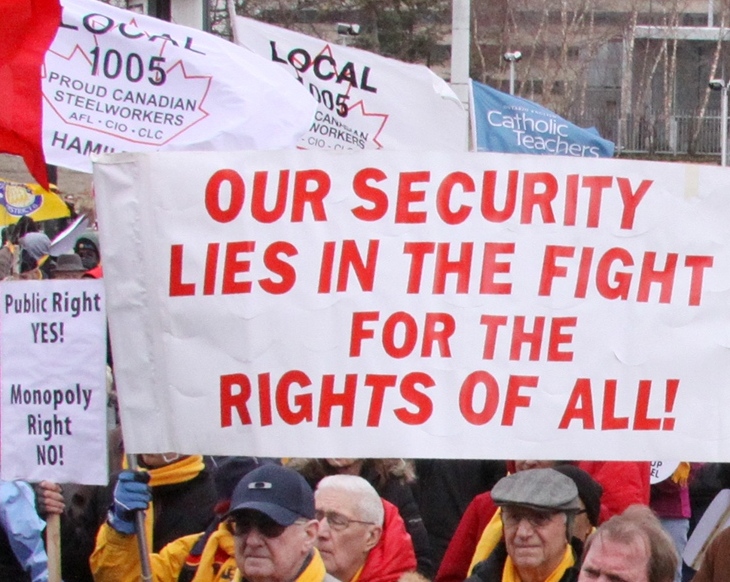 For me and for
Local 1005, COVID-19 is another hazardous
substance that we workers, not just us but all
workers, must deal with. So it's something more
on top of everything else that we are required
to deal with. The difference with COVID-19 is
that for some people it's a lot more acute,
they're seeing the results a lot more
immediately, whereas with designated substances
such as asbestos, it takes a lot longer before
they evolve into a cancer. This can take up to
20 or 30 years for workers. For me and for
Local 1005, COVID-19 is another hazardous
substance that we workers, not just us but all
workers, must deal with. So it's something more
on top of everything else that we are required
to deal with. The difference with COVID-19 is
that for some people it's a lot more acute,
they're seeing the results a lot more
immediately, whereas with designated substances
such as asbestos, it takes a lot longer before
they evolve into a cancer. This can take up to
20 or 30 years for workers.
COVID-19 is another hazard that workers have to
work with and that's why it's so important that
we recognize the workers who are dealing with
this hazard now, all the essential workers, like
the health care workers. For over 20 years now
we've been talking about these workers, the
problems that they are facing, the hospital
workers and so on. That's why for me this day of
mourning is so vitally important. It adds to all
the problems that we have with the other
designated substances and the immediate hazards.
For us, on COVID-19, we've got to see some
movement forward. There have to be rules and
laws in place to protect workers and make it
better for everyone there in the system. The
whole health system has to be overhauled. And
then on top of that, there's the issue of the
right to refuse unsafe work. The workers'
ability to have a meaningful right to refuse
must be re-enforced, not just having the right
to refuse, then the Ministry comes in and does
nothing. It has to be meaningful.
Besides, in the plant, it's difficult when
working with your co-workers to try to stay six
feet apart to respect physical distancing. This
is one of the things that we're trying to do in
the plant and it's challenging.

As president of the union, and from what I see
in the field, my concerns are always for the
health and safety of our members and health care
workers as a whole. It seems to me that
decisions are sometimes made based on what
equipment is available and on inventories, not
on the basis of what is needed. Instructions for
protection and the equipment needed are
constantly changing. Recently, we had a new
directive from our employer in the morning
regarding disposable gowns and in the afternoon
the Minister of Health said that we were
actually facing a shortage. We can see how the
government is failing to protect people's health
and safety. There are over 4,000 people in the
health care system in Quebec who are infected
with the coronavirus. There is a big difference
between what the government says and what is
happening on the ground.
 As far as we are
concerned, we have gone from being guardian
angels to a situation where we simply have to
obey. Because we are in a war situation, our
members are forced to increase their
availability, their shifts are changed, they are
not being respected. Yet these are the troops
who need to be motivated. We have to make sure
that the troops are there, but instead
everything is done to disrespect them and that
pushes them to resign. Since the Government of
Quebec's ministerial order in March, that allows
the government to unilaterally change our
working conditions, employers are no longer
looking for a solution to problems. If we have a
problem, instead of working with us to solve it,
they tell us that they will use the ministerial
order and that they have the right to do
whatever they want. As far as we are
concerned, we have gone from being guardian
angels to a situation where we simply have to
obey. Because we are in a war situation, our
members are forced to increase their
availability, their shifts are changed, they are
not being respected. Yet these are the troops
who need to be motivated. We have to make sure
that the troops are there, but instead
everything is done to disrespect them and that
pushes them to resign. Since the Government of
Quebec's ministerial order in March, that allows
the government to unilaterally change our
working conditions, employers are no longer
looking for a solution to problems. If we have a
problem, instead of working with us to solve it,
they tell us that they will use the ministerial
order and that they have the right to do
whatever they want.
We have been saying since the beginning that it
takes people on the ground to look after the
health and safety of workers. We no longer see
the managers. We do not know where they are. If
the managers do not have the time, they should
put people in charge who will take care of
occupational health and safety. During the last
negotiations, we asked for occupational health
and safety officers, who are health care workers
and are in the field, to take care of what is
going on. The officer would be deployed on a
full-time basis, to go around the
establishments, with the power to say that this
is not working and demand that this or that
measure be applied. Right now we are seeing a
big gap in terms of prevention in the health
care network. We see the weakness of our
network. Since the COVID-19 crisis, the work of
the joint health and safety committees has been
stopped. We never see people from the Labour
Standards, Pay Equity and Workplace Health and
Safety Board either.
Health care workers are not guardian angels,
they are human beings who provide care. They
need to be given good working conditions and the
means to protect themselves.

The main health issue facing teachers is
anxiety. This is reflected, among other things,
in a year-over-year increase in the number of
teachers needing to take extended leaves of
absence. For example, between 2013 and 2018,
while there was a four per cent increase in the
number of teachers in the profession, 13 per
cent more teachers had to take this type of
leave.
 It is clear to us
that it is our working conditions that generate
this illness. The contradiction between the
needs of our students (both pedagogical and
human) and our ability to meet them, given the
lack of resources, is untenable. Schools are
places of complex social relations where all of
society's problems come together, day after day.
We need to deal with young people who are
themselves struggling with mental or physical
illness, or with family members who are
suffering from it, young people who are
financially insecure, or who have learning
disabilities. We reject the pressure that our
overwork is due to individual behavioural
problems, a "bad" way of managing our classes. It is clear to us
that it is our working conditions that generate
this illness. The contradiction between the
needs of our students (both pedagogical and
human) and our ability to meet them, given the
lack of resources, is untenable. Schools are
places of complex social relations where all of
society's problems come together, day after day.
We need to deal with young people who are
themselves struggling with mental or physical
illness, or with family members who are
suffering from it, young people who are
financially insecure, or who have learning
disabilities. We reject the pressure that our
overwork is due to individual behavioural
problems, a "bad" way of managing our classes.
Let's look at what's happening now. The
government has been talking about reopening
schools since April 10 and not once has it
presented the measures it intends to take to
teachers and their organizations for approval.
It induces extreme anxiety for education
workers, their families and the families of our
students. So we talk to each other to put
forward our criteria, as experts in school life.
We see all the more the justice of our demand,
which dates back more than 20 years, to reduce
the student-to-teacher ratio and to have a
sufficient number of professionals and
specialized educators with sufficient hours to
assist us. Things cannot go back to the way they
were.
Another example is maintenance, the cleaning
and sanitation of schools. The number of hours
allocated to this has been decreasing for years
to such an extent that the proposed maintenance
schedule for primary and secondary schools,
published in 2015 by the Ministry of Health and
Social Services, is not being followed at all.
We don't want to go back to our schools where
students' desks are cleaned once a year!
This is why we are currently discussing among
ourselves and with our unions how we ourselves
will organize the return to the classroom. This
is already providing a sense of security in
opposition to the way the government is dealing
with the issue of reopening schools.

(To access articles
individually click on the black headline.)
PDF
PREVIOUS ISSUES
| HOME
Website: www.cpcml.ca
Email: office@cpcml.ca
|

